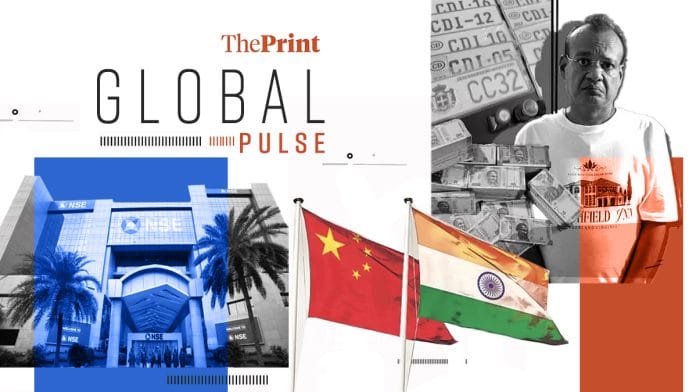New Delhi: The Economists’ Essential India newsletter pits India and China against each other in yet another category—the use of private jets.
While it was Chinese tycoons who made private jet brokers rich when they “took to the skies in droves” during the 2000s and 2010s, between 2020 and 2024, the registered number of private jets in India jumped by nearly a quarter, to 168.
“The number of monthly private flights tripled to more than 2,400, higher than anywhere else on the continent. In the year to March 2025, four of the ten most popular private-jet routes in Asia were domestic Indian ones, connecting Mumbai to Delhi, Bangalore, Ahmedabad and Pune (a mere four-hour drive away). None of the busiest routes began or ended at a Chinese airport,” says the report.
It noted that “in recent years, the number of posh private aircraft registered in China has dropped like a stone, in part because the Communist Party has taken umbrage against lavish displays of wealth”.
In a bizarre chain of events, 47-year-old Harshvardhan Jain set up his very own “diplomatic mission” in a rented building in Ghaziabad for a number of “micronations”. Named Westarctica, Principality of Seborga, Poulbia, Lodonia—depending on the day, reports Pragati K.B. in The New York Times.
According to the ‘Westartica’ website, Jain was made “an honorary Consul to India following a generous donation,” adds the report.
The building even bore the “hallmarks of an embassy”. It was pearly white with a fleet of luxury cars outside, it says. “The police said his building in Ghaziabad, with all its pomp and regalia, was the address for a range of criminal activities, from defrauding people of money by promising employment abroad to running a multinational hawala network—an informal system of transferring money that is illegal in India,” it adds.
India is the biggest IPO market outside the US so far this year. PhonePe, Meesho, Lenskart are among those already cleared by regulators for their public offerings. Urban Company and Pine Labs are “looking to debut later this year,” writes Veena Venugopal in Financial Times’ India Business Briefing.
But the big issues expected this year—LG Electronics, Flipkart, Reliance Jio—are “yet to materialise,” she writes.
“The amount raised in primary public flotations this year has hit $6.7bn, compared with $5.4bn over the same period last year, up nearly 25 percent. Even though there were fewer companies, the quality and scale of offerings was robust, according to an EY report,” notes the report.
India has also resumed the issuing of tourist visas to Chinese nationals after nearly five years, as the “two nations explore ways to mend their strained relationship,” reports Cherylann Mollan in BBC.
“Chinese foreign ministry spokesperson Guo Jiakun said the development was a ‘positive move’ and added that China was willing to work with India to improve the ‘facilitation of people-to-people exchanges’,” says the report.
The BBC also looks at a potential advantage of the India-UK tariff deal—Scotch whiskey—which has long been “protected” by a 150 percent tariff.
“Despite having a 150% tariff and other non-tariff barriers, Indian imports of Scotch have grown to become the biggest national market by volume, overtaking France, while the USA is the biggest by value,” says the report.
It explains that India’s rising middle class is placing “more pressure on their government to give them access to imported products” and “one of them is Scotch whiskey”.
(Edited by Nida Fatima Siddiqui)
Also Read: Global media on ‘fraying of Indian federalism’ & the destabilising force of a world ‘run by old men’






